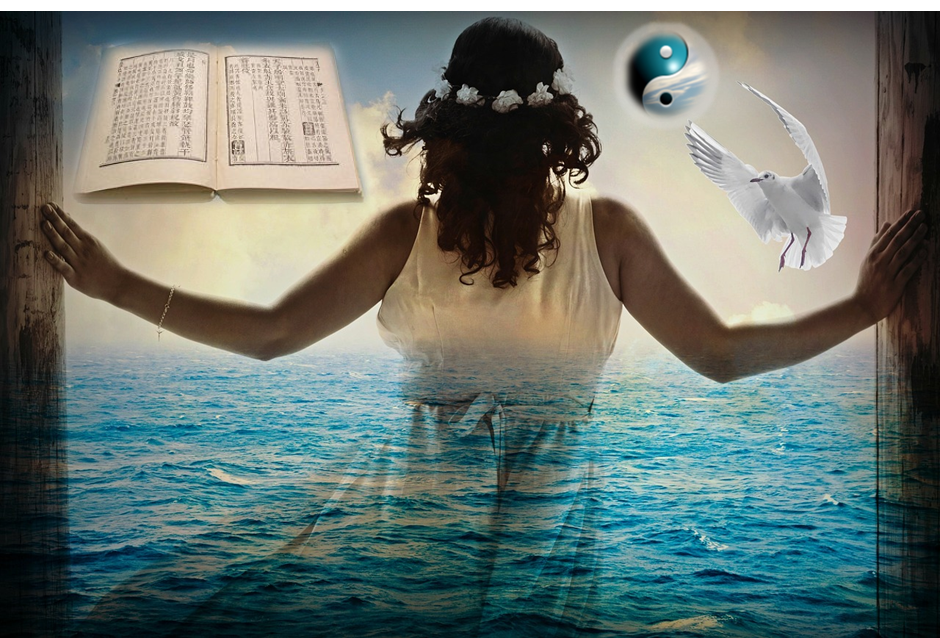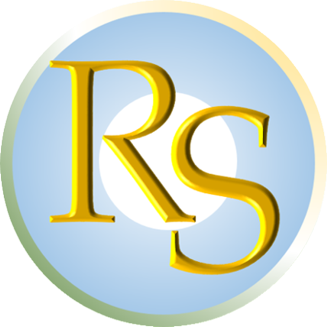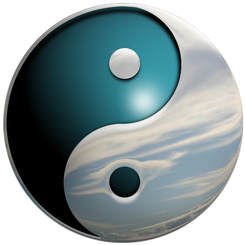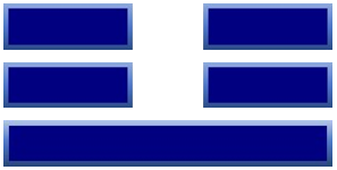
Would you like to have a wise life guide, available with their reliable answers all day long, 24/7? Wouldn’t be great to ask him or her any question related to your life challenges, relationship issues, important decisions, or virtually anything else that your curiosity might demand? Yes, it is absolutely possible with the ancient Chinese book of wisdom, called the I Ching. You can communicate with it pretty easily using various tools which I will present later on.
The process of consulting the I Ching is not some mumbo-jumbo. It is a serious process of learning in which we are facing our own responsibility for life. We are also learning to open our minds, to question everything, to embrace both our excellence and vulnerability, and, most importantly, to open our hearts. It’s an ancient practice of tapping into a vast field of wisdom and knowledge, the knowledge which is already present in ourselves and in the collective consciousness of the Mankind. The process of consulting the I Ching is not some mumbo-jumbo. It is a serious process of learning in which we are facing our own responsibility for life. We are also learning to open our minds, to question everything, to embrace both our excellence and vulnerability, and, most importantly, to open our hearts.
I was convinced in all of this repeatedly for the last twenty-five or so years. When I encountered the Book for the first time, I was suspicious and even derisive of it. However, after some time, I realized that “there was something to it.” Not only that, I had been increasingly amazed at the depth and profoundness of its symbolic guidance. Over time, it has greatly contributed to my spiritual and emotional maturity and I’ve seen that same effect on other people as well.
So, the Book of Changes or I Ching is not a usual book. In fact, it is a comprehensive philosophical system which covers virtually all aspects of life and existence in general, with its 8 basic “trigrams” (compositions of three different horizontal lines) and 64 “hexagrams” (each consisting of six lines). Therefore, it is not primarily intended for divination. It is a deep and complex philosophical and spiritual teaching. You can do both – read it and ask it for answers. Nevertheless, its coaching power is immense. Its symbolical responses are intricate and multi-layered, with both direct meaning related to the question and the description of the overall situation, its various aspects, and advice what to do and how to behave. The Book’s answers consist of one or two hexagrams, each with a symbolic meaning that can be applied to virtually every life situation. I know that many of you are eager to find out how to get these wise answers, but still, I would strongly recommend that you first delve a little bit into the Book’s metaphysical foundations, in order to adjust your subconscious mind to its powerful collective energy. By doing this way, you will more easily establish an effective communication, pose the best questions and understand the Book’s responses. The Book’s answers consist of one or two hexagrams, each with a symbolic meaning that can be applied to virtually every life situation.
Fundamental Concepts of the Book
The I Ching is based on the Taoist understanding of changes of the two basic aspects of existence - Yin (female, passive principle) and Yang (male, active principle), and their dynamic relationship. Yin and Yang are seemingly two opposites, but essentially, they are two complementary images of the same underlying reality. In ancient China, this reality is called Tao. The I Ching is based on the Taoist understanding of changes of the two basic aspects of existence - Yin (female, passive principle) and Yang (male, active principle), and their dynamic relationship.
The Tai Chi symbol usually represents their dynamic interrelationship:
The Tai Chi symbol tells us that these two basic forces are always interconnected and fluctuating. When you go around the circle of the symbol, you will see that one of them is getting stronger, while the other is decreasing, and vice versa. The dots inside each of them represent the seeds of the other force, arising within it.
The message is deep, yet quite simple: life is based on two complementary, indivisible principles, active and passive. They are always changing. When one of them is at its peak, it will inevitably transform into its opposite. The other principle arises. The message of Yin and Yang to all of us, in all circumstances, is simple, yet enlightening: This, too, shall pass. Characteristics of Two Basic Principles The following characteristics are attributed to Yin and Yang: Yin: Female, Passive, Dark, Material, Earth, Negative, Low, Smooth, Warm Yang: Male, Active, Bright, Spiritual, Celestial, Positive, High, Strong, Cold Above stated features never imply anything bad or wrong. Even the “dark,” “cold or “negative” do not really mean something bad. They are simply neutral attributes that can be considered as “good” or “bad” only by the limited human mind in specific conditions. The two fundamental principles are being represented by two types of lines: broken (yin) and solid (yang) line, as shown in the figures below.
These two types of lines may form the so-called “trigrams” (compositions of three successive lines) or “hexagrams” (combinations of six consecutive lines). Here is an example of trigram:
Now, let's take a look at a hexagram:
2 Comments
|
Please note that most of the articles have a "Read More" break, which is sometimes hardly visible.
It is located at the bottom of visible part of the article, on the right side. To continue reading the article, click on that link. This page may contain affiliate links meaning we earn a commission if you use those links.
We only recommend pages we appreciate and trust. Archives
March 2023
Categories
All

|
For guest posts or placing ads on our website, please use the contact form on the 'About/Contact Us' page.





 RSS Feed
RSS Feed

